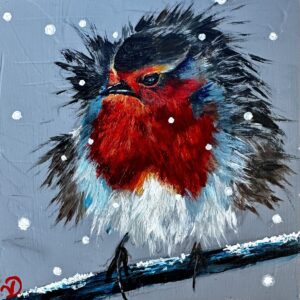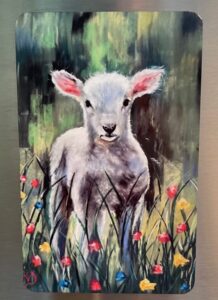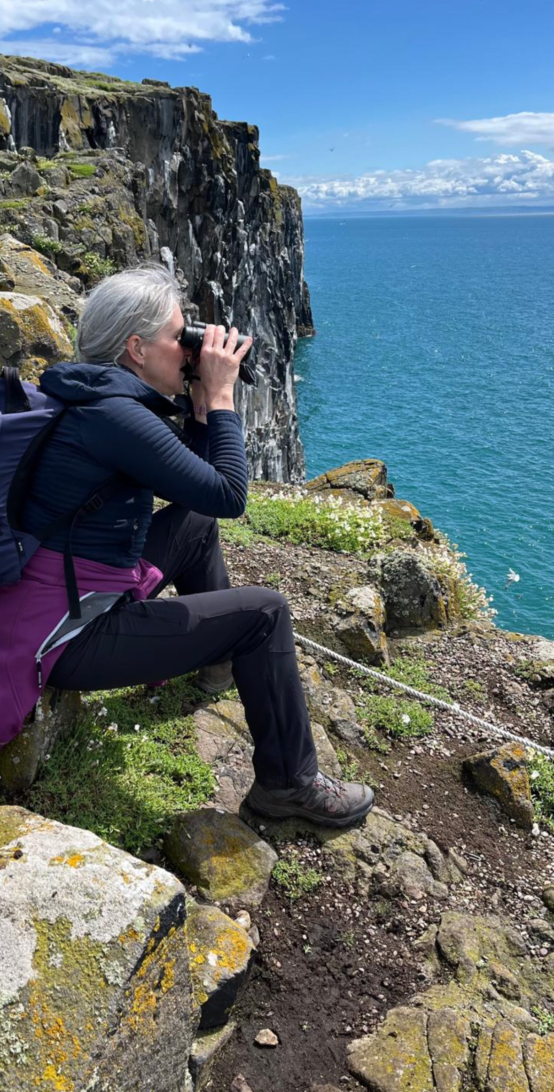The Artistic Journey – Capturing Animal Personalities
Welcome to my fascinating world of animal art, where each brushstroke and colour choice brings the essence of wildlife closer to heart. In this blog, we dive deep into the artistic process that captures the unique personalities of animals, transforming them from mere subjects to storytellers on canvas. From the initial spark of inspiration to the final execution, each piece of art is a testament to the beauty and complexity of nature.
Inspiration Behind the Canvas
The journey of an animal artwork begins with a flicker of inspiration—an encounter, a memory, or a moment in nature that strikes a chord deep within. For me, it’s the unspoken tales of the wild, the quiet dignity of a hare, or the majestic presence of a highland cow that kindle my artistic fire. These creatures, each with their unique character and story, inspire me to pick up my brush and capture their beauty.
The Yorkshire countryside, with its untamed beauty and wildlife, serves as an endless source of inspiration. Watching a hare dart across the field or a group of them playing at dusk ignites my imagination, urging me to preserve these fleeting moments in my sketchbook, or on canvas.

Observation and Connection
To truly capture the personality of an animal, one must first observe and connect with it. This connection is not merely physical but emotional, allowing animal artists to see beyond the fur and feathers into the soul of the creature. Spending hours, sometimes days, in nature, I watch my subjects in their natural habitats, noting their habits, movements, and expressions. This deep observation helps me understand the animal’s behaviour and traits, forming a bond that transcends the physical realm. It is this intimate acquaintance that enables me to translate their personalities into art, ensuring that each piece not only depicts their appearance but also embodies their spirit.
The Effects of Different Animal Art Mediums
Animal artists use a variety of mediums to bring their visions to life. Each medium offers unique characteristics that can significantly impact the portrayal of animal personalities. Here’s how different mediums contribute to capturing the essence of wildlife:
Oil Paints: Known for their richness and depth of colour, oil paints allow for detailed textures and subtle colour transitions, making them ideal for capturing complex fur patterns and the lively expressions of animals.
Acrylics: Acrylic paint dries quickly and offers a versatile range of effects. Its ability to layer easily makes it perfect for creating dynamic landscapes and highlighting the vibrancy and energy of wildlife subjects.
Watercolours: The fluidity and transparency of watercolours are excellent for capturing the ethereal beauty of animals. This medium can convey the softness of fur, the delicacy of feathers, and the gentle nuances of animal expressions with a dreamlike quality.
Charcoal and Pencil: These mediums are perfect for emphasising the stark contrasts and intricate details of animal features. The monochrome tones can convey powerful emotions and the raw beauty of wildlife.
Choosing the Right Moment
Art is about capturing moments, and when it comes to portraying animals, selecting the right moment is crucial. It’s about finding that split second when an expression or a pose encapsulates the animal’s character perfectly. Sometimes, it’s the mischievous glint in a squirrel’s eye or the serene grace of a bird in flight. These moments are fleeting, often lasting no longer than a heartbeat, but when captured, they tell a story. The challenge lies in being both patient and prepared, ready to immortalise that perfect instance when the animal’s personality shines brightest.
Through these initial stages of the artistic process, the foundation is laid for creating artworks that not only depict animals but celebrate their individuality and the shared connection between them and us.
The Final Touches
The final touches on a piece of art are not just about completion but about breathing life into the work. This phase involves revisiting the initial inspiration, refining details, and enhancing contrasts and colours to ensure the animal’s personality shines through. It’s also a time for the artist to step back and view the piece as a whole, ensuring harmony and balance within the composition. The signing of the artwork marks its completion, serving as a seal of authenticity and the artist’s connection to the creation.
If you need inspiration for your wild art, check out some of my pieces and see if they meet your tastes.

Recent Posts
Upcoming Events
The British Art Prize Exhibition, Gallery Oxo, London
4th December - 8th December 2024 Gallery@oxo, Barge House Street, London, UK View the 50 shortlised artworks and the winning pieces from this year's British Art Prize. The British Art Prize is a prestigious open art competition run by Artists and Illustrators...





